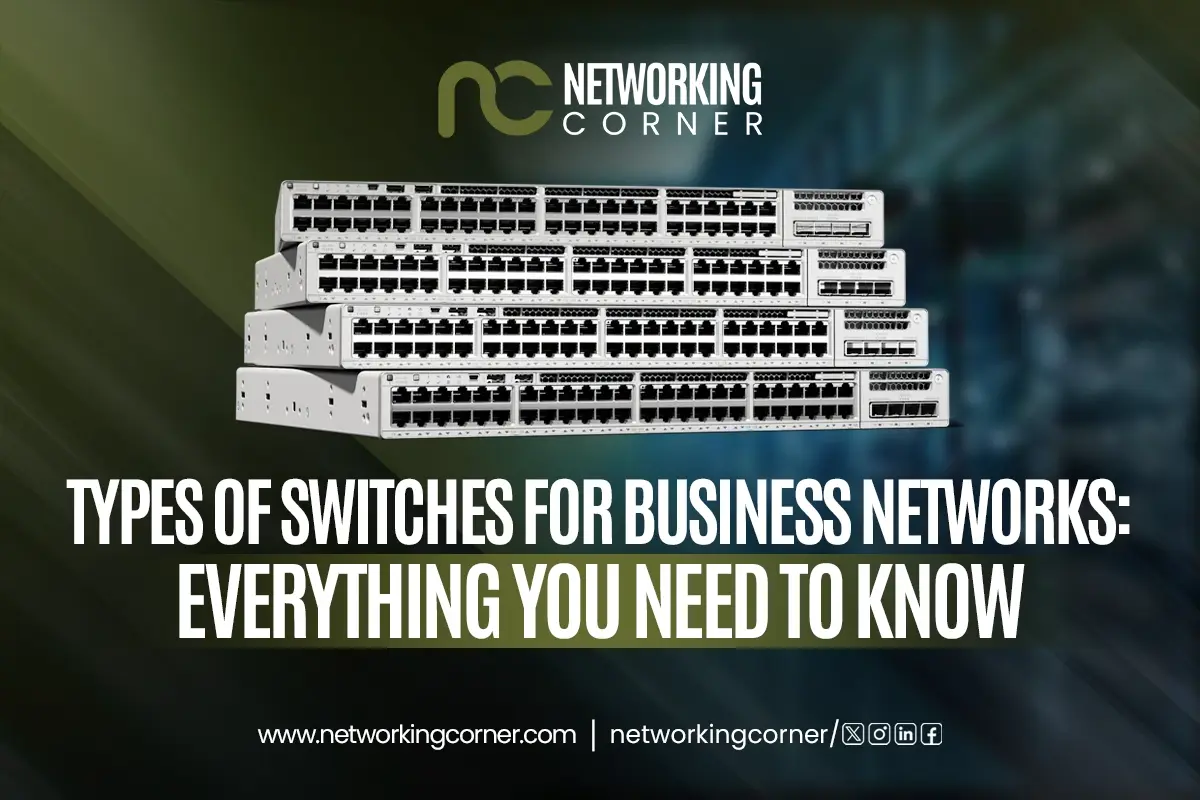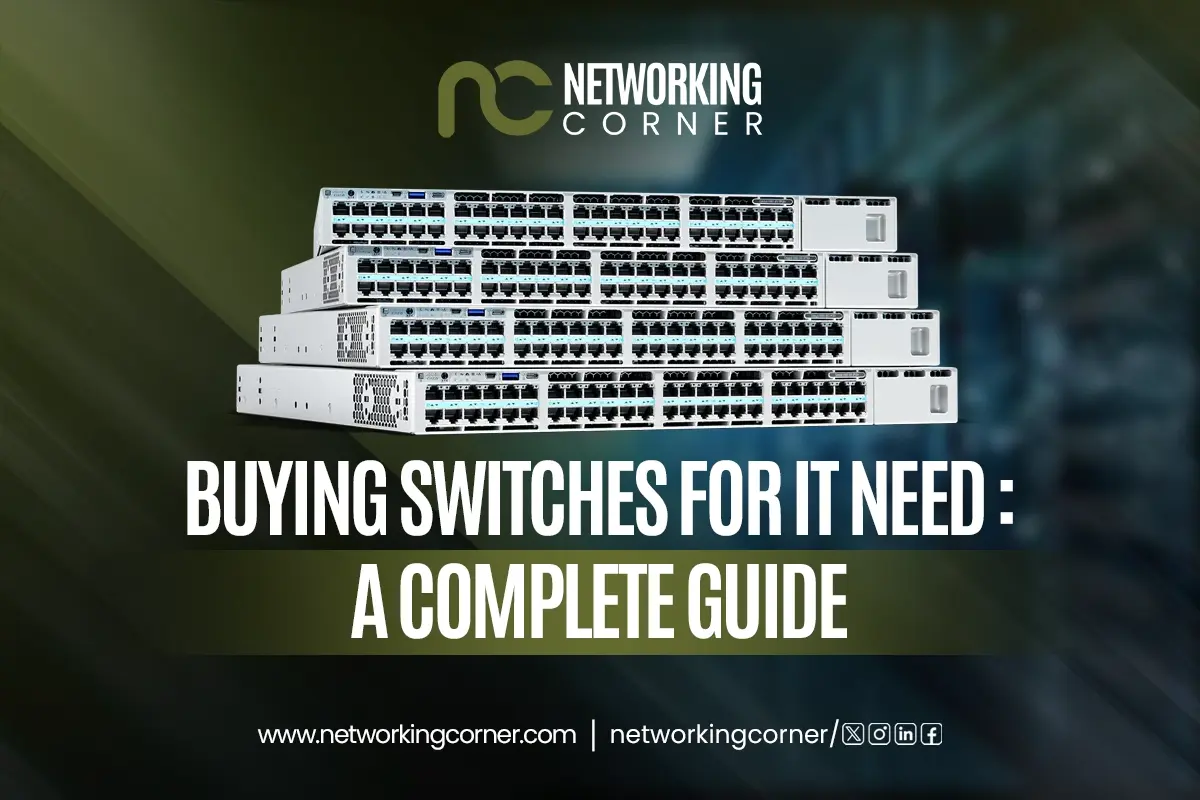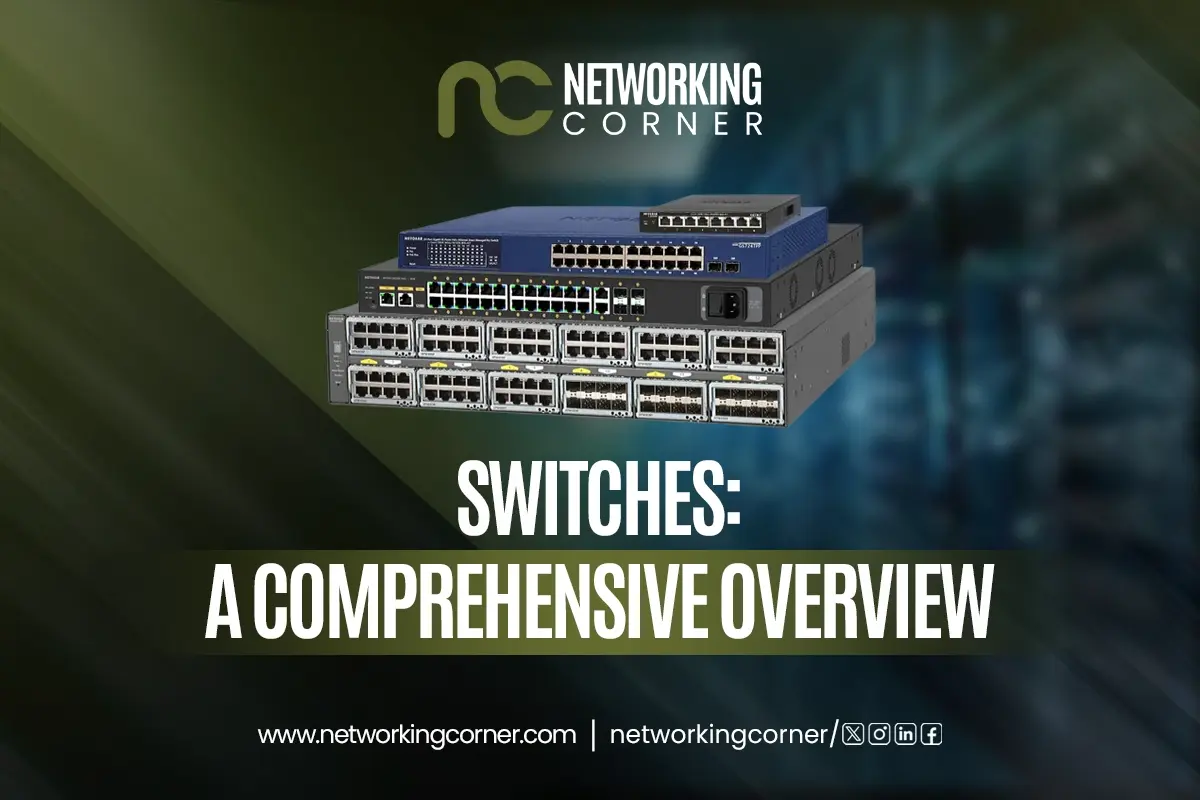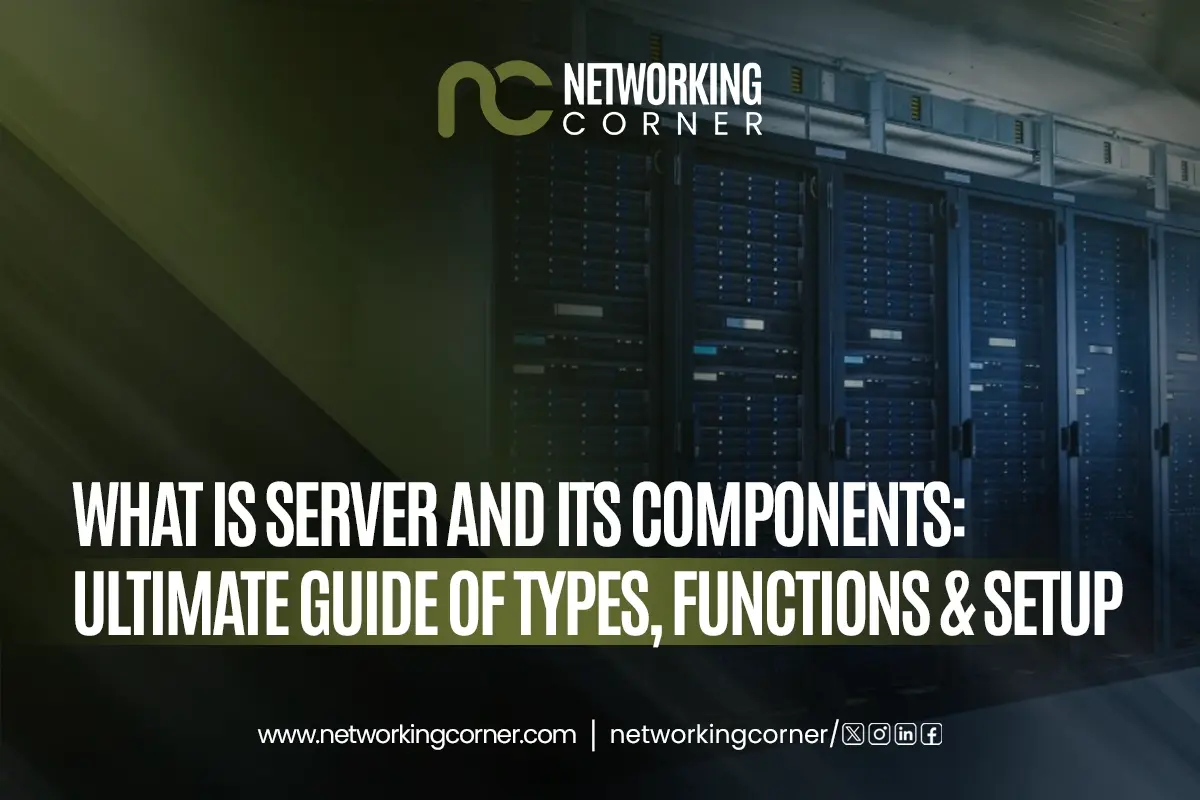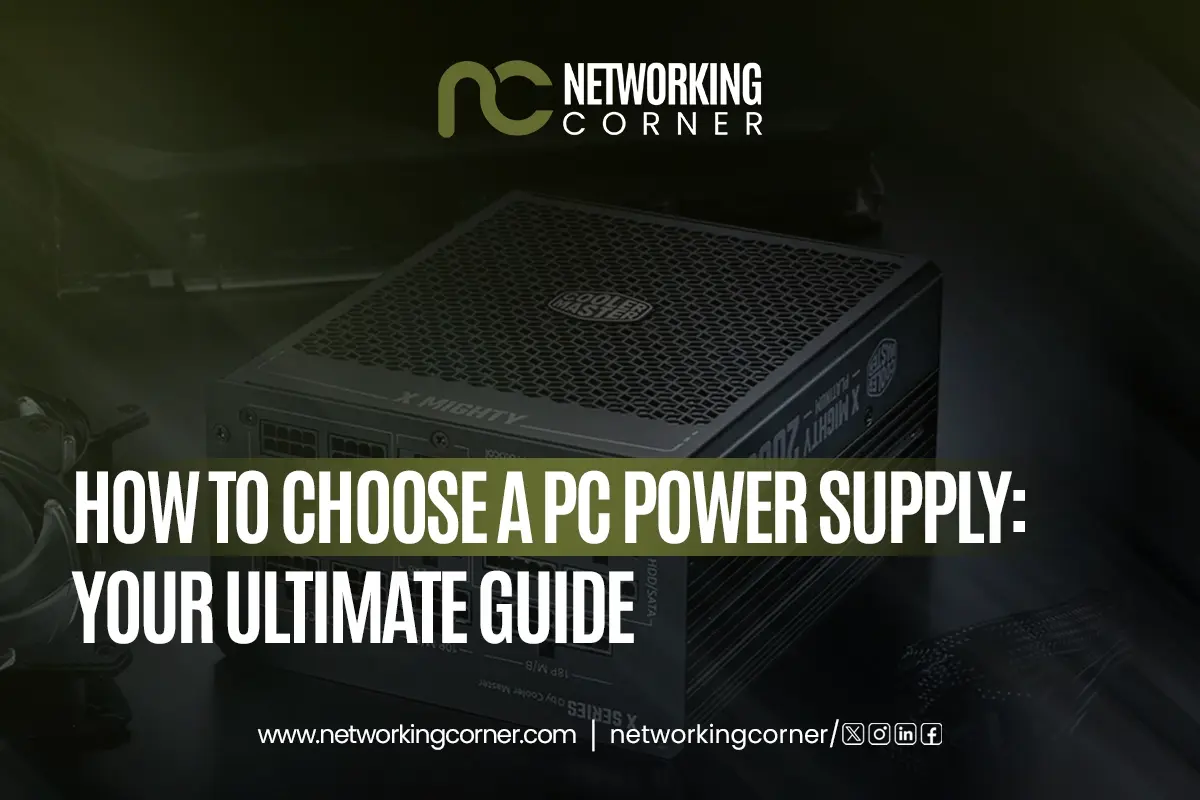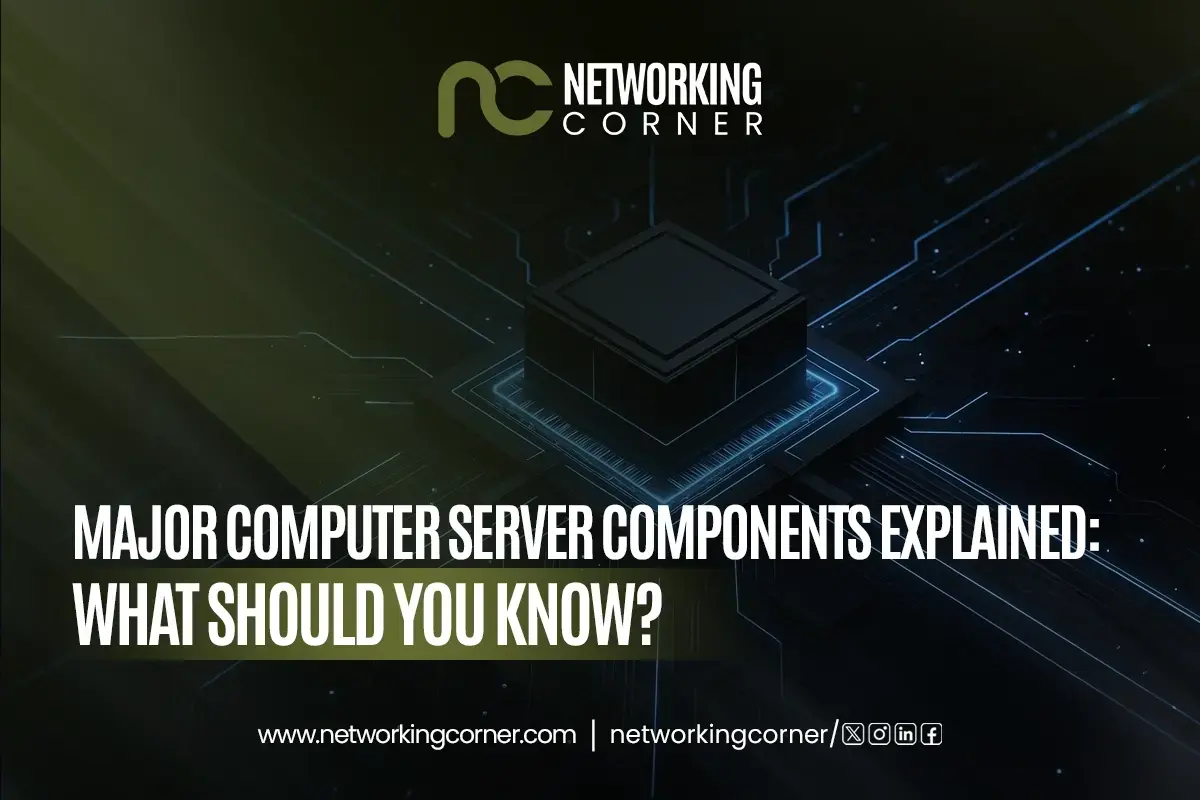
The need for robust computer systems has skyrocketed in the growing digital environment of today. Whether you oversee an enterprise-level network or a small company, knowing the main parts of a computer server is very crucial. The foundation of data storage, administration, and network hosting is servers; so, understanding how to set and maintain these systems is vital for seamless operations.
What Is a Computer Server?
Usually serving customers, a computer server is a specialized kind of computer used to manage, store, and process data for other devices on a network. Unlike a standard personal computer (PC), a server generally supports many users and apps concurrently and operates constantly, managing more tasks.
Among the many uses for servers include hosting websites, offering cloud storage, database administration, or corporate file storage centres. The configuration of the components becomes crucial in offering high performance, dependability, and scalability when contemplating creating or maintaining a network server.
Server Motherboard

The server motherboard is the main circuit board connecting all the parts of a server. Like the motherboard of a computer, it is the basic structure allowing the interaction among the CPU, memory, storage, and other parts. While selecting a motherboard for your server, devote considerable attention to compatibility with important server components such as the CPU, RAM, and power supply.
Typically compared to consumer motherboards, a server motherboard provides many CPUs, more memory capacity and extra connecting choices. Along with several Ethernet connections, extra RAID (Redundant Array of Independent Discs) capability and specific features like BMC (Baseboard Management Controller), which offers remote administration capabilities, server motherboards may also contain.
Key Features of Server Motherboards:
- Help for ECC (Error-Correcting Code) memory.
- Several CPU slots for either twin or quad CPUs.
- Additional RAM slots up to thirty-two or more.
- Remote monitoring using integrated IPMI, or intelligent platform management interface.
Server Switches
A server switch is a device that links many servers on a network so that data may move effectively between them and other devices, such as storage units and workstations. Data flow and network speed depend on switches, which have many settings and are very crucial.
Maintaining the dependability and performance of the network in larger surroundings, including data centres, depends on network switches. Multiple ports that these switches may provide allow one to link different server machines and other network equipment. Modern switches, with their additional ports and high-speed capabilities, support advanced blade servers and other modular server configurations.
Key Features of Server Switches:
- Connects a variety of devices with various port configurations.
- Supports fast communication with speeds like 10GbE or more.
- Enables both data link-layer (Layer 2 and Layer 3) functions and routing capabilities.
- Segments network traffic to increase security and performance using VLAN support.
- Offers failover systems that include link aggregation to guarantee continuous operation.
- Quality of Service (QoS) gives key applications first priority for traffic.
- Delivers data as well as power to connected devices such as IP phones and wireless access points via Ethernet (PoE).
Server Hard Drive
On a server, all of the data lives on its hard drive. Unlike traditional hard drives used in consumer PCs, server hard drives are designed for exceptional availability, reliability, and capacity. Among the many models of server hard drives are HDDs (hard drives) and SSDs (solid state drives).
HDDs are conventional mechanical hard drives that contain moving components and are typically slower than SSDs. On the other hand, SSDs enhance server performance by enabling quicker read and write speeds, particularly in environments that require rapid data access.
RAID systems are frequently integrated into server storage options to enhance data redundancy and performance. For example, RAID 1 ensures data availability by copying data across two drives even in the event of a failed drive. RAID 5 enhances read and write performance as well as provides data redundancy.
Key Features of Server Hard Drives:
- Designed for continuous, 24/7 operation with minimal downtime.
- Built to withstand constant use and prevent data loss, ensuring consistent performance.
- Enhances data redundancy and performance through RAID configurations.
- Offers large storage options to handle extensive data loads.
- HDDs are more cheaply priced but slower, whereas SSDs provide faster data access, hence reducing latency.
Server Memory

Quick data processing capability of a server depends on its server memory (RAM). To meet the greater needs of corporate applications and multi-user environments, server memory usually has to be bigger, quicker, and more
dependable than standard consumer PCs.
ECC (Error Correction Code) RAM, often employed in servers to prevent data corruption, plays an essential role in mission-critical applications where data integrity is paramount. The type of server, whether a rackmount workstation, a GPU server hosting platform, or a network server, will determine the specific RAM requirements.
Key Features of Server Memory:
- Server memory is typically much larger than consumer RAM and supports more extensive data processing needs.
- Automatically detects and fixes memory faults, therefore guaranteeing data integrity and lowering the risk of system failures.
- To manage vast amounts of data and quick processing times needed for corporate applications, server memory runs at greater speeds.
- As demand rises, servers give memory expansion flexibility to satisfy changing performance criteria.
- Manages concurrent requests from several users or programs so that servers keep flawless performance under excessive load.
Server Power Supply

A PSU converts grid-based electrical power into the type of electrical power that the components of the server want. Especially high-performance computers and rackmount workstations, servers require power sources able to run continuously without interruption, and handle massive loads.
In high-load scenarios specifically, be sure the PSU chosen for a server has enough power to support all components. Since servers can run around the clock, a redundant power supply (RPS) is a common solution to guarantee constant operation. Should one PSU fail, the backup PSU will take over to provide ongoing power.
Key Features of Server Power Supply (PSU):
- Guarantees that the PSU can provide sufficient power to run all server components, including CPUs, RAM, and storage devices.
- Designed to convert electricity with little loss, power supplies guarantee more efficient energy consumption and help reduce heat generation.
- Redundant PSUs guarantee that, should one unit fail, the other takes over without compromising the functioning of the server, therefore ensuring 24/7 uptime.
- Designed to handle heavy loads, server PSUs are ideal for hard work and projects driven by power consumption.
- Many server PSUs are hot swappable, that is, they may be replaced while the server is still working, therefore lowering downtime.
- Let you customise using addable or removable components depending on the power needs of the server.
- Designed to run in harsh conditions with a long lifetime, therefore lowering the need for regular replacements.
Cooling Solutions
Among the factors of server maintenance, the most crucial is cooling. Servers generate a lot of heat; hence, without suitable cooling systems, they may overheat and result in hardware issues or performance degradation.
Cooling a server can be accomplished in various ways:
Air cooling: Strategic placement of fans inside the server allows air cooling, which is a heat-dissipating action.
Liquid cooling: Liquid cooling solutions benefit high-performance servers by virtue of their greater heat-dissipating capacity. GPU server hosting often features strong CPUs that can lead to noticeable heat buildup.
HVAC: In server racks, cooling is usually accomplished using HVAC systems or extra fans to maintain temperature within reasonable working limits. In dense configurations, including data centres, where high-performance servers are stacked together, these solutions help avoid overheating.
Key Features of Cooling Solutions:
- Cooling solutions, whether air or liquid, are designed to maintain optimal operating temperatures, ensuring that components do not overheat.
- Correct cooling guarantees long-term dependability by avoiding heat damage, therefore extending the lifetime of server components.
- Depending on the server configuration from individual machines to whole data centers, cooling systems can be scaled up or down.
- Particularly, liquid cooling and advanced cooling methods run quieter than conventional fans, therefore lowering server room noise.
- Some modern cooling technologies, including liquid cooling, are more energy efficient than conventional air cooling, thereby reducing the power consumption.
- Apart from maintaining server temperature, HVAC systems also manage humidity levels, therefore preventing moisture accumulation that can affect hardware.
Chassis/Case
All of the internal components of the server are housed in this actual enclosure. It guarantees correct airflow for cooling and helps to safeguard the hardware. Popular for their small, space-efficient designs are rackmount servers and blade servers.
Installable on a server rack, a rackmount workstation offers a highly scalable and orderly arrangement. Particularly in places with limited floor space, wall-mounted server racks provide space-saving alternatives for smaller server configurations.
Key Features of Server Chassis/Case:
- Protects internal elements against external elements such as dust, physical damage and others.
- Designed with airflow channels and fan locations to provide the best cooling, therefore avoiding overheating of server components.
- Rackmount and blade server designs maximize space, making them ideal for large-scale server deployments where space is a critical factor.
- Especially in rackmount and modular chassis designs, provide adaptability to grow the system with more components or servers.
- Modular designs help to replace, upgrade, or maintain individual components without upsetting the general configuration.
- Many server chassis include built-in cable management features to guarantee improved airflow and help to clear clutter.
- Particularly in blade and rackmount servers, high-quality chassis can have noise-dampening elements to reduce running sound in sensitive surroundings.
- Chassis can have locking systems to guard server parts from illegal access.
Blade Servers
Blade servers are a kind of server in which several server modules are combined onto a single chassis. Although every blade is a self-contained server, they share resources, including cooling systems and electricity, therefore minimizing the required space. They are therefore perfect for data centres and large-scale corporate settings.
Blade servers have the benefit of minimizing physical space and energy usage while also providing excellent processing capability. Many times these servers are deployed in settings where limited accessible real estate and scalability are crucial.
Key Features of Blade Servers:
- Blade servers cut total energy use relative to conventional servers by distributing power and cooling resources.
- For developing companies, blade servers are quite scalable as they can be readily extended by adding more blades to the chassis.
- Usually providing centralized administration systems, blade servers help to ease maintenance, monitoring and upgrades for every blade in the chassis.
- Sharing resources, including power, cooling, and network connections, many blades housed within one chassis maximise efficiency.
- Blade servers are appropriate for demanding applications, even if they are small in size, as they have great computational capability and support for different workloads.
- Designed for rapid installation and removal, blade servers help minimize downtime and ensure minimal disturbance during system replacements or upgrades.
Server Racks
Organisation and storage of servers in a data centre or server room depend critically on server racks. Racks give servers protection, help to maximize space and enhance ventilation.
Usually expressed in U (rack units), server racks range in size and design; 1U is equal to 1.75 inches. A 42U rack, for instance, can fit up to 42U of server gear. Racks are crucial for keeping an orderly and effective system, whether your modest setup requires a wall-mounted server rack or a full-sized rackmount workstation for operations on an enterprise scale.
Key Features of Server Racks:
- Designed to maximize vertical space, server racks let several servers and other equipment be housed effectively on a constrained floor area.
- Better airflow around servers is intended to be promoted by racks, therefore improving cooling efficiency and reducing overheating in crowded server settings.
- Because they are modular, server racks allow for quick expansion. Extra units can be added to meet expansion when more servers or equipment are required.
- Usually measuring in U units (1U = 1.75 inches), server racks offer a uniform and standard design that streamlines server installation and administration.
- Built-in cable management systems on many server racks help to organize cables effectively, therefore enhancing ventilation and minimizing clutter.
- Lockers, doors and panels may all be included in server racks to guarantee servers are safe from illegal access.
- For different installations, server racks may be set up with full-height racks for large business systems and wall-mounted racks for smaller settings.
- Usually constructed from robust, long-lasting materials like steel, racks guarantee that servers are securely housed and free from harm.
Network Servers and Server PCs
Among the network resources mainly controlled by a network server are data storage, communication, and internet access. Services might call for DNS ( Domain Name System), DHCP (Dynamic Host Configuration Protocol) or file sharing.
On the other hand, a server PC is a traditional personal computer repurposed for use in server operations. Although they lack dependability or scalability as dedicated servers, server PCs might be a reasonably priced option for home labs or small businesses.
High-Performance Computing
GPU server hosting becomes necessary sometimes, especially for applications needing large-scale data processing or machine learning. Designed for parallel processing tasks, GPUs, or Graphics Processing Units, may considerably speed up computer activities when integrated into a server.
Research, artificial intelligence development, and video rendering chores all make extensive use of GPU servers. Setting up GPU server hosting requires making sure the server has the processor capability, memory, and cooling capacity to manage the extreme computing demand.
Conclusion
Ensuring flawless, dependable and effective functioning of a computer server depends on an awareness of its main components. Whether you're configuring a server PC, running network servers or investigating GPU server hosting, understanding the function of each component from the server motherboard to cooling solutions is essential to creating a system that satisfies your demand.
While selecting and configuring the server components, always take into account the type of workload, scalability requirements, and future enhancement possibilities. With the right components and configuration, these servers can readily handle the most taxing tasks, therefore ensuring that your network works safely and without problems.
FAQ's
How to Choose the Right Server Components for Your Needs?
Choose components depending on the workload, performance standards, scalability and future upgrade possibilities to properly meet business goals.
What is the most stable and reliable operating system/code base for computer servers, and why?
Due to its security, adaptability, and widespread community support, which help define Linux (Ubuntu Server, CentOS, Red Hat) as typically the most stable and dependable operating system.
What is the purpose of a Computer Server and explain how it can help any business?
For companies, a computer server offers centralized services like data storage, networking, and application hosting, which increases efficiency and cooperation.
What is server infrastructure, and why is it crucial for businesses?
Server infrastructure, then, encompasses the hardware, software, and networking technologies that support corporate applications, providing dependability, scalability, and effective data management.
What type of CPU is best for a server?
The best CPU for a server is typically a multicore processor (e.g., Intel Xeon or AMD EPYC) that supports high workloads, scalability, and efficient multitasking.

